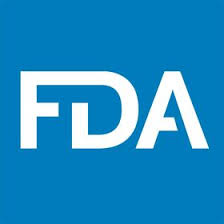The following is the latest COVID-19 information from the state and federal governments as of 3:30 p.m. on Thursday, November 19.
Pennsylvania Update
Department of Health
 The Department of Health has released its “COVID-19 Interim Vaccination Plan.” Among other considerations, the plan addresses:
The Department of Health has released its “COVID-19 Interim Vaccination Plan.” Among other considerations, the plan addresses:
- The phased approach the state proposes for administering vaccines to different segments of the population.
- Provider recruitment and enrollment.
- The readiness of the state’s health care infrastructure to play its planned role in administering vaccines.
- Vaccine allocation, storage, and distribution.
- Information technology and record-keeping considerations.
- Regulatory considerations.
- Public outreach.
- Vaccine program communication.
During a Thursday afternoon news briefing, Secretary Levine made the following points about the planned vaccine program and other aspects of the state’s response to COVID-19.
- Vaccines will be administered in three phases: first, to health care personnel, people age 65 and older, high-risk individuals, and residents of congregate settings; second, other vulnerable populations and people with high-risk conditions; and third, the rest of the state’s population.
- The state will make a special effort to work through mass vaccination clinics, FQHCs, and other groups to ensure outreach to at-risk people who do not participate regularly in the health care system.
- In the beginning, it may be difficult to receive the Pfizer vaccines in some rural areas that lack hospitals with the capacity to store those vaccines, so residents of such areas may need to travel a bit to get vaccinated until other vaccines become available.
- The state currently has adequate testing capacity and hospital beds the turnaround time on test results is much shorter than it was in the past.
- The Secretary has confidence in the capacity of the state’s hospitals to handle the increased caseload of COVID-19 patients, does not plan to order them to suspend non-urgent procedures, but has contingency plans if the situation merits more drastic action.
- Distribution of the monoclonal antibody bamlanivimab to hospitals will begin later this week.
Department of Health – by the numbers
 Pennsylvania’s number of COVID-19 cases today surpassed 288,000.
Pennsylvania’s number of COVID-19 cases today surpassed 288,000.- For the third consecutive day, the state surpassed its previous high for the number of new cases in a single day.
- More than 9500 Pennsylvanians have now died from COVID-19. Daily death figures are now much higher than they have been since May.
- The number of COVID-19 patients currently breathing with the help of a ventilator has nearly tripled since November 1.
- More than 600 Pennsylvanians are currently in hospital intensive care units being treated for COVID-19.
- 16 percent of hospital adult ICU beds are currently unoccupied, as are 16 percent of medical/surgical beds, 38 percent of pediatric beds, 15 percent of pediatric ICU beds, and 35 percent of airborne isolation unit beds. These percentages translate into 663 available adult ICU beds, 3188 available medical/surgical beds, 297 available pediatric beds, 50 available pediatric ICU beds, and 893 airborne isolation beds. The number of available adult beds has fallen slightly in recent days while the number of available pediatric beds has risen slightly.
Federal Update
Provider Relief Fund
 The Provider Relief Fund web page has been updated with the following notice:
The Provider Relief Fund web page has been updated with the following notice:
The application deadline for the Provider Relief Fund Phase 3 General Distribution was Nov. 6, 2020. You must have submitted your Taxpayer Identification Number (TIN) for validation by 11:59 p.m. ET on Nov. 6, 2020 for Phase 3 relief funds. If you submitted your TIN for validation by the deadline and your TIN is validated by Nov. 13, you will be able to proceed with submitting your revenue documentation to complete your application by 11:59 p.m. ET on Nov. 27, 2020.
The Provider Relief Fund FAQ has been updated with three new questions and one modified question.
- (pp. 15-16) Will the Provider Relief Fund limit qualifying expenses for capital equipment purchases to 1.5 years of depreciation, or can providers fully expense capital equipment purchases? (Added 11/18/2020)
Expenses for capital equipment and inventory may be fully expensed only in cases where the purchase was directly related to prevent, prepare for and respond to the coronavirus. Examples of these types of equipment and inventory expenses include ventilators, computerized tomography scanners, and other intensive care unit- (ICU) related equipment put into immediate use or held in inventory; masks, face shields, gloves, gowns; biohazard suits; general personal protective equipment; disinfectant supplies.
- Can providers include the entire cost of capital facilities projects as eligible expenses, or will eligible expenses be limited to the depreciation expense for the period? (Added 11/18/2020)
Expenses for capital facilities may be fully expensed only in cases where the purchase was directly related to preventing, preparing for and responding to the coronavirus. Examples of these types of facilities projects include upgrading a heating, ventilation, and air conditioning (HVAC) system to support negative pressure units; retrofitting a COVID-19 unit; enhancing or reconfiguring ICU capabilities; leasing or purchasing a temporary structure to screen and/or treat patients; leasing a permanent facility to increase hospital or nursing home capacity.
- (p. 16) Do providers report total purchase price of capital equipment or only the depreciated value? (Modified 11/18/2020)
Providers who use accrual or cash basis accounting may report the relevant depreciation amount based on the equipment useful life, purchase price and depreciation methodology otherwise applied. Providers may report an expense for items purchased with a useful life of 12 months or less if in accordance with their existing accounting policies. For additional information on capital depreciation, please refer to the other Frequently Asked Questions related to capital equipment and capital facility projects.
- (pp. 24-25) Providers may have significant fluctuations in year-over-year net patient revenues due to settlements or payments made to third parties relating to care delivered outside the reporting period (2019-2020). Should Provider Relief Fund recipients exclude from the reporting of net patient revenue payments received for care not provided in 2019 or 2020? (Added 11/18/2020)
Provider Relief Fund recipients shall exclude from the reporting of net patient revenue payments received or payments made to third parties relating to care not provided in 2019 or 2020.
Centers for Medicare & Medicaid Services
 CMS has published instructions for coding and billing for infusions of the investigative monoclonal antibody therapy bamlanivimab for COVID-19 patients. Also included in the instructions is information about Medicare payments for those infusions.
CMS has published instructions for coding and billing for infusions of the investigative monoclonal antibody therapy bamlanivimab for COVID-19 patients. Also included in the instructions is information about Medicare payments for those infusions.- CMS has published data on payments it has made to providers under the Medicare Accelerated and Advance Payments Program, including a breakout of payments by provider and supplier type and a list of payments made to providers by name and National Provider Identifier.
- CMS has released the first episode in a series of short podcasts for frontline nursing home staff called “CMS Beyond the Policy.” This edition is titled “Nursing Home Series for Front Line Clinicians and Staff” and addresses training and infection control practices in nursing homes to help combat the spread of COVID-19.
Department of Health and Human Services
- HHS has launched a pilot program with five states to use portable, cartridge-based COVID-19 molecular test kits that provide rapid results (within 20 minutes). The pilot will be conducted in Alaska, Florida, Louisiana, New Jersey, and Texas.
- HHS has updated its work plan for audits and evaluations for COVID-19-related programs and activities.
Centers for Disease Control and Prevention
- The CDC has updated its COVID-19 toolkit for clinicians.
- The CDC also has updated its clinical FAQs on COVID-19.
- The CDC has published a new version of its “COVID-19 Science Update.”
Food and Drug Administration
 The FDA has issued an emergency use authorization for the first COVID-19 diagnostic test for self-testing at home that also provides rapid results. It is a single-use test intended to detect the virus that causes COVID-19.
The FDA has issued an emergency use authorization for the first COVID-19 diagnostic test for self-testing at home that also provides rapid results. It is a single-use test intended to detect the virus that causes COVID-19.- The FDA has reorganized its FAQs on the development and performance of tests for COVID-19 to make it easier to navigate to questions by topic. The agency also updated the answers to some questions.
Resources to Consult
Pennsylvania Department of Human Services
Pennsylvania Department of Health
Centers for Disease Control and Prevention